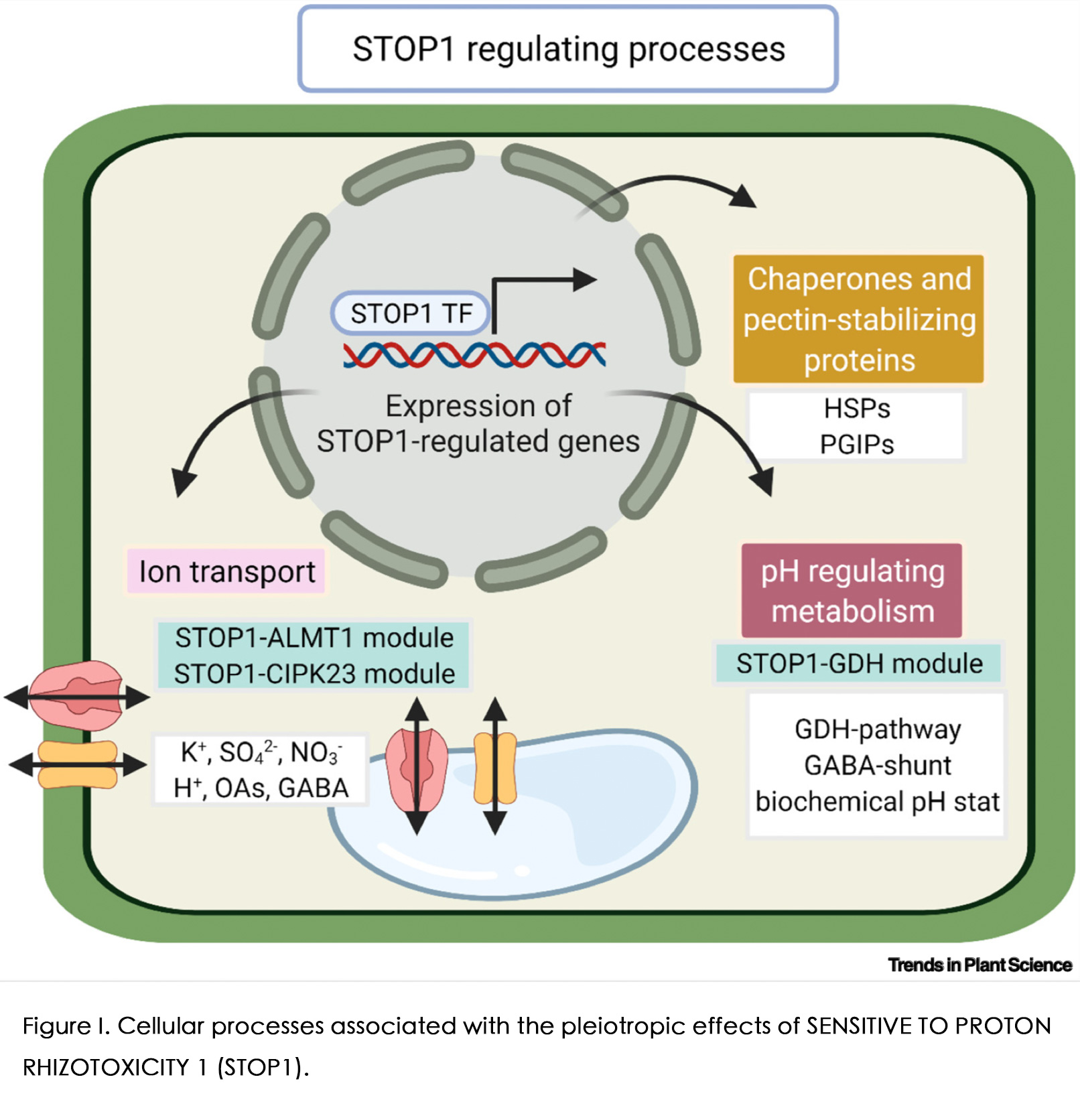博文
Trends in Plant Science:STOP1作用于植物胁迫适应的协同和拮抗多效性
||
Synergistic and antagonistic pleiotropy of STOP1 in stress tolerance
第一作者:Ayan Sadhukhan
第一单位:岐阜大学
通讯作者:Hiroyuki Koyama
Abstract
SENSITIVE TO PROTON RHIZOTOXICITY 1 (STOP1) is a master transcription factor (TF) that regulates genes encoding proteins critical for cellular pH homeostasis. STOP1 also causes pleiotropic effects in both roots and shoots associated with various stress tolerances. STOP1-regulated genes in roots synergistically confer tolerance to coexisting stress factors in acid soil, and root-architecture remodeling for superior phosphorus acquisition. Additionally, STOP1 confers salt tolerance to roots under low-potassium conditions. By contrast, STOP1 antagonistically functions in shoots to promote hypoxia tolerance but to suppress drought tolerance. In this review, we discuss how these synergetic- and antagonistic-pleiotropic effects indicate that STOP1 is a central hub of stress regulation and that the harmonization of STOP1-regulated traits is essential for plant adaptation to various environments. 摘 要 
STOP1是编码调控细胞内pH稳态蛋白的关键转录因子。STOP1同时具有多效性功能,作用于植物地下和地上组织的多种胁迫耐受性。STOP1在根中调控的基因协同赋予根在酸性土壤中其它胁迫因子的耐受性和根系结构重建,以获取更好的磷吸收。此外,STOP1在低钾条件下赋予植物根系耐盐性。相反,STOP1在地上部分具有促进耐缺氧,但抑制耐旱的拮抗作用。本综述中,作者讨论了STOP1的协同和拮抗多效性,揭示其是如何成为胁迫调控的核心枢纽,以及受STOP1调控的性状的协调对于植物适应各种环境至关重要。
doi: https://doi.org/10.1016/j.tplants.2021.06.011
Journal: Trends in Plant Science
Published date: July 09, 2021
https://blog.sciencenet.cn/blog-3158122-1295098.html
上一篇:Horticulture Research:火龙果基因组揭示其基因组演化和甜菜素生物合成调控
下一篇:Plant Cell:衣藻细胞中实时监控亚细胞水平的过氧化氢波动
全部作者的其他最新博文
- • Plant Physiology:CsMADS3促进柑果中的叶绿素降解和类胡萝卜素合成(华中农业大学)
- • Molecular Plant:LBD11-ROS反馈调节作用于拟南芥的维管形成层增殖和次生生长(浦项科技大学)
- • Science Advances:根结线虫通过调控植物的CLE3-CLV1模块,促进侵染进程(日本熊本大学)
- • Nature Communications:油菜素内酯参与植物营养生长期转变的分子机制解析(浙江农林大学)
- • Current Biology:光合作用产生的蔗糖驱动侧根“生物钟”(德国弗莱堡大学)
- • PNAS:花同源异型基因在叶中被抑制、花中被激活的分子机制(南卡罗来纳大学)